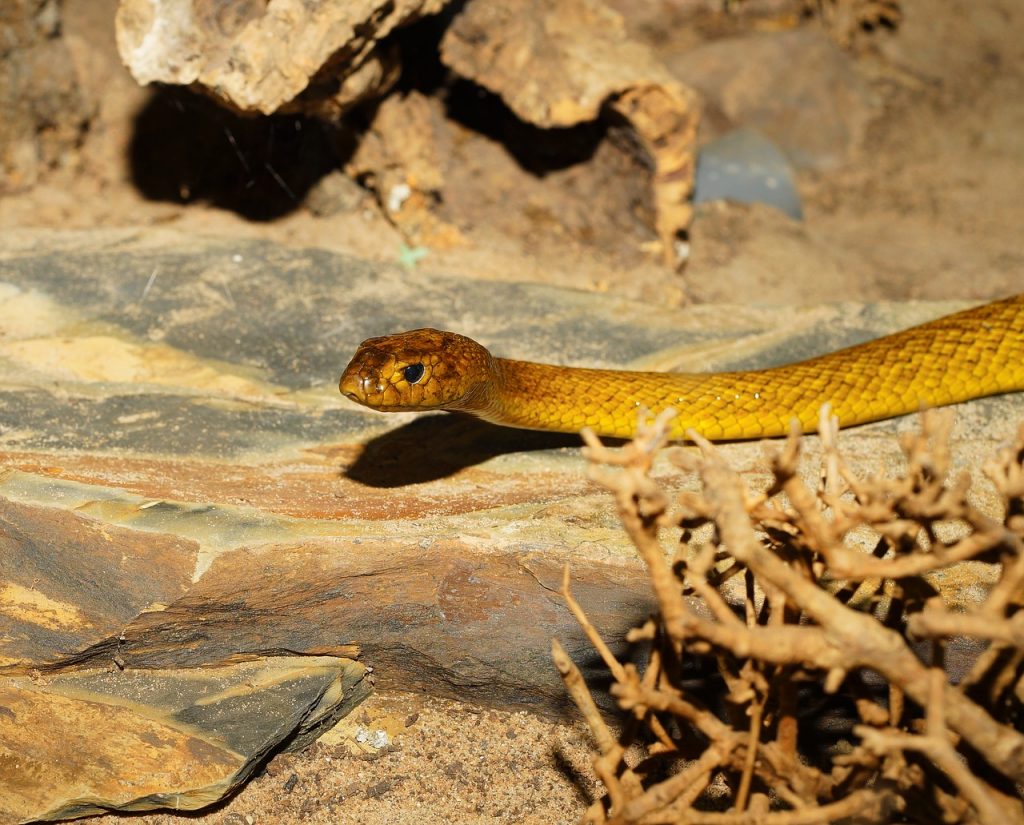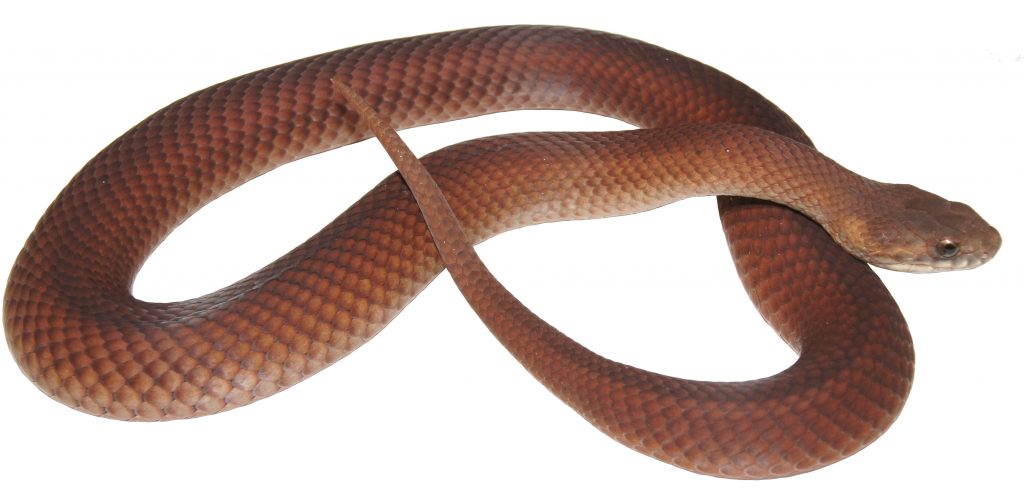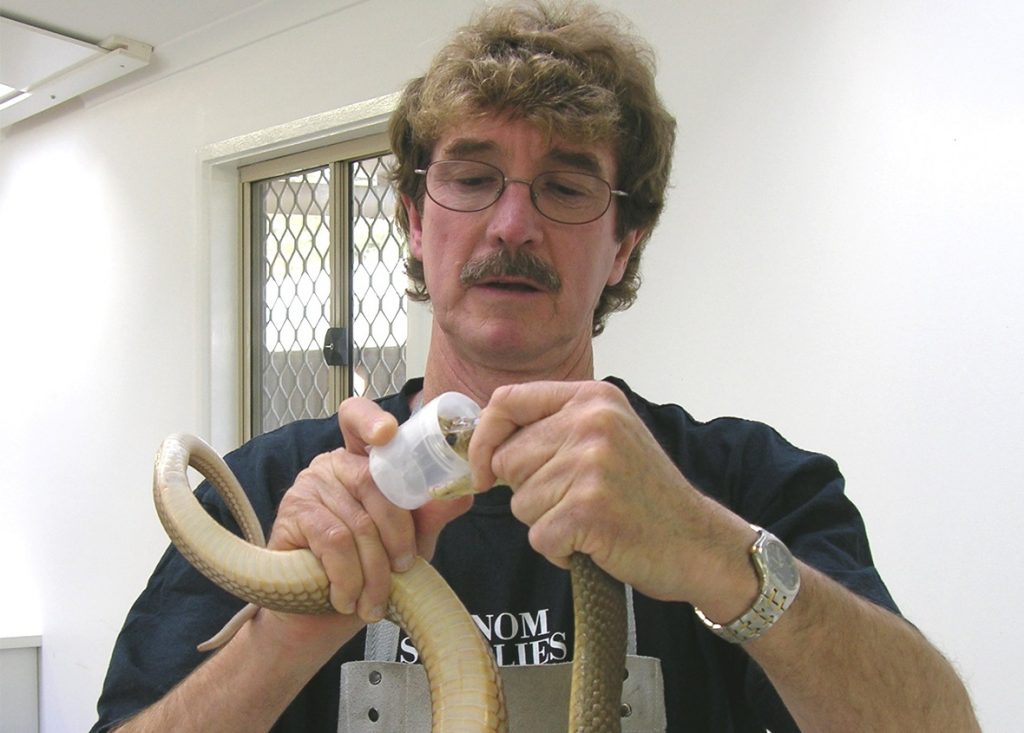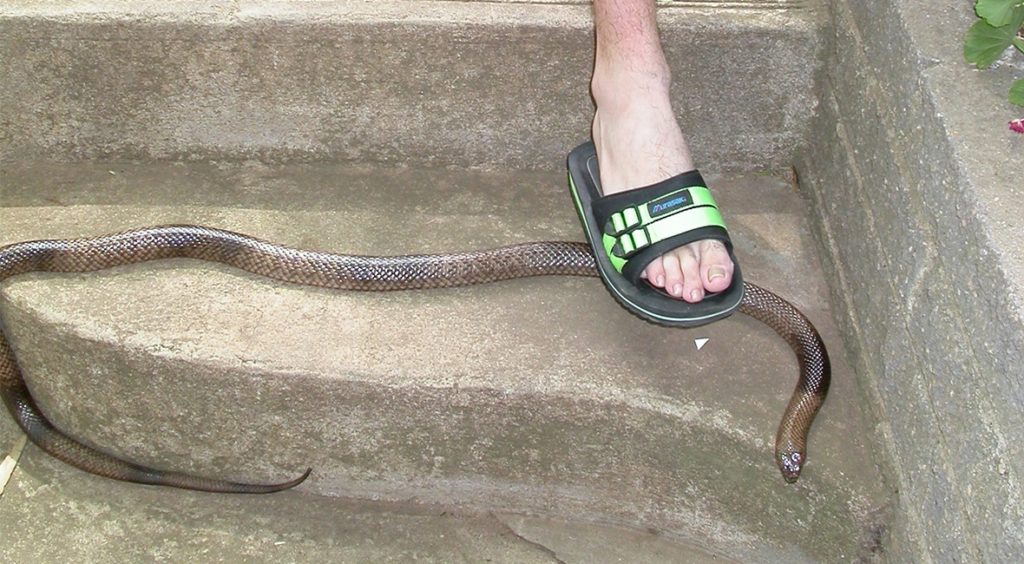
An inland taipan on rocks
No-one has ever died from a bite from the world’s most deadly snake, the inland taipan.
Fear of snakes is one of the most common phobias in the world. This is, of course, for good reason considering they have the reputation of being feisty and potentially fatally venomous! However, behind that façade is a creature that is fascinating, unreal and valuable slithering right beneath our noses.
Helping us shed some light on the world of snakes, the authors of Australia’s Dangerous Snakes draw from their experiences in the fields of herpetology, toxinology and clinical medicine, to present us with the overt facts about what Australia’s venomous snakes are really like.
Here’s some striking fast-facts you can sink your teeth into, bound to get you hooked on learning more about this slithering species.
- Most juvenile snakes born do not survive. A female brown snake may produce over 700 eggs in her lifetime but on average, only 2 offspring will survive to adulthood.
- No-one has ever died from a bite from the world’s most deadly snake, the inland taipan.
- Snake venom is a potpourri of different toxins, not just a single toxin. Most of the toxins act simultaneously and at different rates. The major ones from Australian snakes are clotting activators and inhibitors, nerve blockers and muscle toxins.
- Snakes are rarely active on very hot days and some species like it cool and overcast. Tiger snakes and red bellies are happy at around 17 deg C ambient and overcast. Northern snakes like it a bit warmer.
- And did you know that male snakes have 2 penises!
What’s your poison?
So here’s the deal – if a snake is venomous, this doesn’t necessarily mean it’s dangerous. Australia is home to 205 species of snakes. Of those 65% are venomous, but only 32% are considered dangerous, meaning their bites could be life-threatening.

The Bardick snake
The Bardick snake. Credit Peter Mirtschin
For example, the Bardick, Echiopsis curta, is a venomous snake. It sounds scary, right? In fact its venom is only mildly venomous to humans so it’s not considered to be dangerous. So, if you happen to get bitten by a Bardick, it’s unlikely you’ll be seriously harmed.
Another not-so-dangerous snake is the Mosaic sea snake, Aipysurus mosaicus. This sea snake’s venom can cause pain and inflammation but due to its diet (which consists exclusively of fish eggs) it has lost its fangs and its venom glands have deteriorated so it poses a minimal threat!
Snakebite medicine
Snakes, just like all other native animals in the ecosystem help to provide an equilibrium. They prey on a wide range of our native and non-native species, playing their part in keeping everything balanced. But did you know our dangerous species also play an important role in modern-day medicine? Snake venom is increasingly being used for medical research on a number of fronts, and ironically its being found that the toxins in venom that have the potential to harm us, are also able to be used to save us.

Scientist extracting snake venom
Peter Mirtschin extracting venom from a coastal taipan. Credit: Peter Mirtschin
For example, hemotoxin found in snake venom attacks our body’s blood clotting ability but is also being used in research to treat heart attacks and blood disorders. Likewise neurotoxins such as notexin from the Tiger snake and taipoxin from the Taipan have been used in research to unlock mechanisms in our neuromuscular systems. The lifesaving treatment us humans need could be just around the corner, still to be discovered in the properties of a snake’s venom.
Turning phobia into fascination

Man stepping on snake in sandals
Snake venom expert Nathan Dunstan demonstrates what not to do with a Patch nosed snake (P aspidorhyncha). Credit: Peter Mirtschin
Like many humans, snakes enjoy the simple life: with daily activities that consist of making dinner, finding a home and settling down. Biting us is usually the least of their priorities so we’re encouraged to not fear our dangerous species. After all, they are an interesting bunch!


30th July 2018 at 5:10 pm
Hi Kerrie Martin, to the best of my knowledge there is no information available that answers your questions.
There are some pretty solid anecdotes, and bits and pieces of science, which few people disagree with, but they relate more to specific instances of habitat change and its effects on one, or a few, species.
For example, a species of snake called a broad-headed snake, has declined around Sydney sandstone country, almost certainly because of habitat loss, and people collecting bush rock, which the snakes need for shelter.
Another example is the decline of certain species of snakes with the advance of cane toads. Most snakes that eat cane toads are killed by poisoning from the toad (which also dies). King brown snake (aka mulga snakes) populations are widely suspected of declining as they first encounter cane toads, but then there is some evidence that they then increase again, though probably not to their pre-toad levels.
There is definitely no evidence, one way or another, of snakes declining or increasing since protection, or as a result of the loss of natural predators such as birds of prey. I reckon Australia’s premier snake eating bird of prey is the brown falcon, and they’re extremely common over vast areas of the country.
19th January 2018 at 9:04 am
I am having an disagreement with a friend who says snake numbers are in decline or are in check for expectations. I feel they have been steadily on the increase in Australia since they became protected and their key natural predator being birds of prey are less in numbers now.
Could someone provide an historical trend chard for Australian snakes giving estimations of population increase and decrease by species and region (or State).?
22nd November 2017 at 5:58 pm
An elderly chap died in 2016 of a taipan bite in Cairns Qld.
15th November 2017 at 3:31 pm
Christine, have a look at http://www.qm.qld.gov.au/Find+out+about/Animals+of+Queensland/Reptiles/Snakes/Common+and+dangerous+species/Green+Tree+Snake
15th November 2017 at 12:04 pm
No one has ever got back to me about a snake I saw many years ago in Pickett’s Valley, NSW. It looked like the longest skinniest tree snake ever and was bright green. It was out of proportion to snake size, it was so skinny I could not tell if it had scales but it was close to a metre in length and was traveling pretty swiftly on top of curved grass. When I attempted to pick it up with a stick it behaved like wet thread. So I left it alone and it went away very fast.